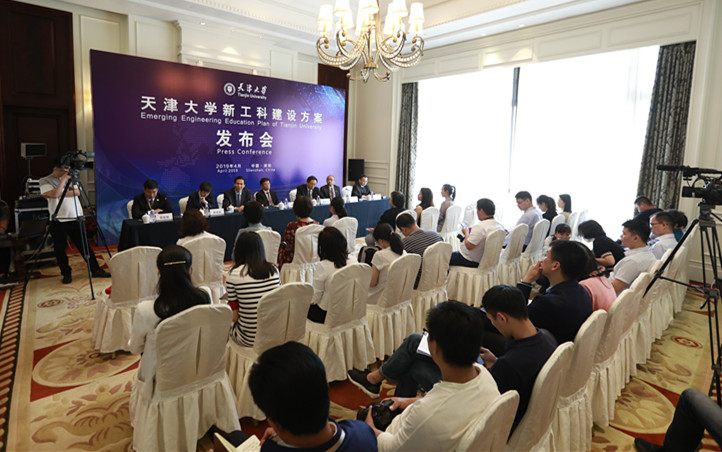Tianjin University Launches CCII to Develop 3E

The Coherent-Collaborative-Interdisciplinary-Innovation (CCII) was released on April 26. The CCII will provide a new paradigm to the construction of the Emerging Engineering Education (3E) around the world.
From TJU Action to CCII
In 2017, the Ministry of Education of China initiated the development of Emerging Engineering Education, and Tianjin University released TJU Action Plan for the Construction of Emerging Engineering Education, in which the exploration of a new paradigm for the engineering education was put forward. TJU Action together with the Fudan Consensus and Beijing Guideline opened up a new path to the engineering education reform.
In the following years, the Emerging Engineering Education Center has been established at Tianjin University. TJU designed the disciplinary structure that keeps pace with the times, was dedicated to promoting the industry-education integration and international cooperation, and proposed to form the International Alliance of Emerging Engineering Education to construct a new engineering education model.
In 2016, the idea of 3E development was put forward in the circles of higher education. In the following two years, the construction of 3E in China was in full swing, with 30 project groups consisting of 612 3E research and practice projects going on smoothly and rapidly. Majors such as big data, robotics engineering, intelligent manufacturing, and intelligent medicine sprang up like mushrooms. Policies including Excellence Plan 2.0 were formulated to boost 3E development. Some institutions of higher learning are deepening the reforms in terms of organizational structure, talent cultivation model, management and evaluation mechanisms, and established new organizations like the schools of industries, future technology, and interdisciplinary institutes, among many others, as well as are upgrading the traditional schools.
Looking around the world, top universities have been reflecting on the system of engineering education and carrying out educational reforms in the recent years. MIT launched the New Engineering Education Transformation program in 2017, that targets the future engineering system and cultivate leading engineering talents that may lead the development of future industries, while Stanford’s Stanford 2025 describes the concept of Open Loop University in which the school age and years of study would not be restricted, paced education, axis flip and purposed learning.
The TJU Solution Applies to Other Universities and Colleges
Gu Peihua is a TJU alumnus and Fellow of Canadian Academy of Engineering and International Academy of Production Engineering-CIRP. He is now the Director of TJU’s Emerging Engineering Education Center and in charge of exploring the 3E development. He emphasized that the CCII is not designed only for TJU. The CCII can also apply to other universities and colleges.
He said that the CCII reconstructs the curriculum system and cultivating mechanism of engineering talents. The curriculum system of CCII consists of both projects and courses. These projects and courses form a “curriculum unit”, and each unit mainly includes five projects — project within the courses, project of course groups, multidisciplinary team project, scientific research practice project and graduation project of research and development. Together they form a net in which each project is closely linked with others. Students are encouraged to use what they learn for creation and entrepreneurship and to boost the emerging industries and explore new areas.
The CCII also includes an open cultivating platform featuring multidisciplinary combination and multi-participation, in which the integration of industry/enterprise and university, interdisciplinarity, domestic and international cultivation, and teaching-researching-learning. With this platform, research labs, engineering centers, maker space and innovation entrepreneurship incubators are able to function as a whole to provide a comprehensive cultivation.
The timely and comprehensive evaluation from the students are of great importance to the implementation of the CCII. Therefore, students’ responsibility, thought and ability, and the careers of graduates are emphasized in the CCII. A comprehensive reform of the university is also required in the CCII. At present, TJU is designing and constructing many platforms aiming at the future to cultivate students — platforms of intelligent machines and systems, health care, and intelligent chemical industry and green energy, just to name a few. The transformation and upgrading of engineering disciplines rely on technologies like AI and big data.
TJU aims to explore the “TJU model” of emerging engineering construction and promote its experience to the whole world. TJU will go on to explore the construction of new platforms with other universities and colleges and strive to expand the coverage of the CCII.

